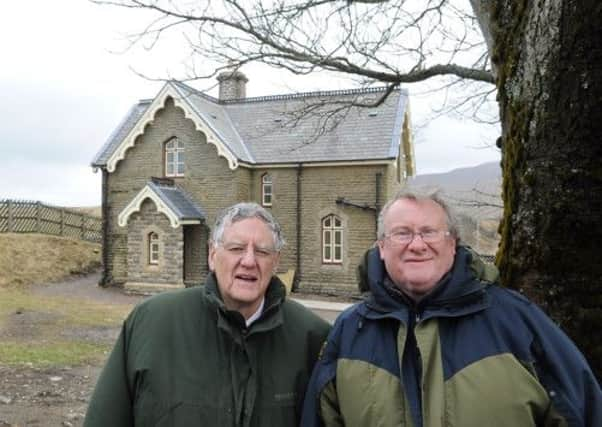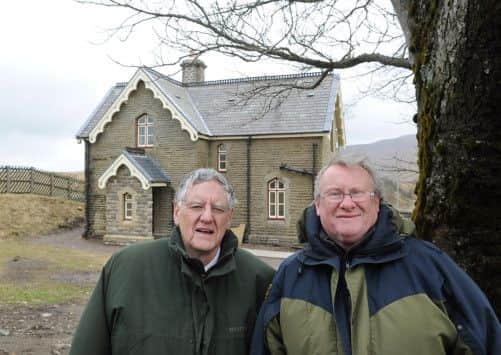Video: Unique house with a window on to the Settle-Carlisle line


Things have certainly moved on a bit since those days – the station master’s house at Ribblehead became redundant, together with the post’s requirement to collect weather reports, when it became unstaffed in the 1960s.
The home, which has a special place in the area’s railway heritage, is surrounded by spectacular scenery already familiar to lovers of the Settle-Carlisle railway and now more people are to get a chance to take in the views after it has been refurbished and is to provide accommodation for holiday-makers.
Advertisement
Hide AdAdvertisement
Hide AdWorks have been carried out by the Settle and Carlisle Railway Trust in sympathy with its heritage and it has been restored to its original state, complete with the livery of the railway company that built the line.


Trustee Graham Dalton said: “The station master’s house was last owned by a school for outdoor pursuits and it was in a poor condition when we bought it.
“Since then we have carried out a major refurbishment to return it to its original state – complete with the cream and maroon livery of the Midland Railway Company.
“It was important that the renovation supported the heritage aspects of the railway line and we think that has been achieved very successfully.”
Advertisement
Hide AdAdvertisement
Hide AdThe Trust owns the buildings at Ribblehead, Horton and Kirkby Stephen stations on the line and maintains and develops them.
The station master’s house, which is due to be officially reopened on Wednesday, was in dire need of some care and attention when it was bought by the Settle and Carlisle Railway Trust.
It became redundant in 1967 and was subsequently sold and became a private house. In 1985 the building changed hands and became a base for outdoor activities for pupils of a school in Lancashire, and was later acquired by the Trust who waged a fundraising campaign to see the building restored back to its former glory.
Yesterday Roger Bingham, the Yorkshire Dales National Park Authority’s member champion for the conservation of cultural heritage, said: “It is marvellous that it has been so sensitively restored.
Advertisement
Hide AdAdvertisement
Hide Ad“Bringing the building back to life also has a valuable financial spin-off because it will be used for holiday occupation and will bring in much-needed revenue for the local economy.
“By its very name, the house illustrates social attitudes of 150 years ago as even an employee of the railway was regarded as a ‘master’ by lesser employees and no one would have envisaged there being a ‘station mistress’. The building itself illustrates both domestic and transport history.
“Architecturally it illustrates that non-vernacular forms were accepted even for relatively humble dwellings, although the house itself with its earth privy, cold tap, large clear pane windows, high ceilings and separate bedrooms for parents, girls and boys would be way above the living conditions of the labouring class.”
For those with a bit of romance in their souls the Settle-Carlisle railway has always stood head and shoulders above other lines.
Advertisement
Hide AdAdvertisement
Hide AdIt is not simply that its trains take the passenger on a journey through a wealth of breathtaking scenery but also the wonder at the engineering feats which allowed the line to come into being at all.
According to local legend, when a Dales farmer came across Victorian pioneers surveying a new railway line he is reported to have warned: “If yer build t’ railway up ’ere it’ll hev t’ be o’ stilts.”
And he was almost right – not stilts exactly but a succession of sweeping bridges and viaducts linked by embankments, cuttings and tunnels, forcing the last main line to be built by muscle power through the very roof of England.
In the 1980s the line was faced with closure but campaigners found a fierce battle and won a reprieve.